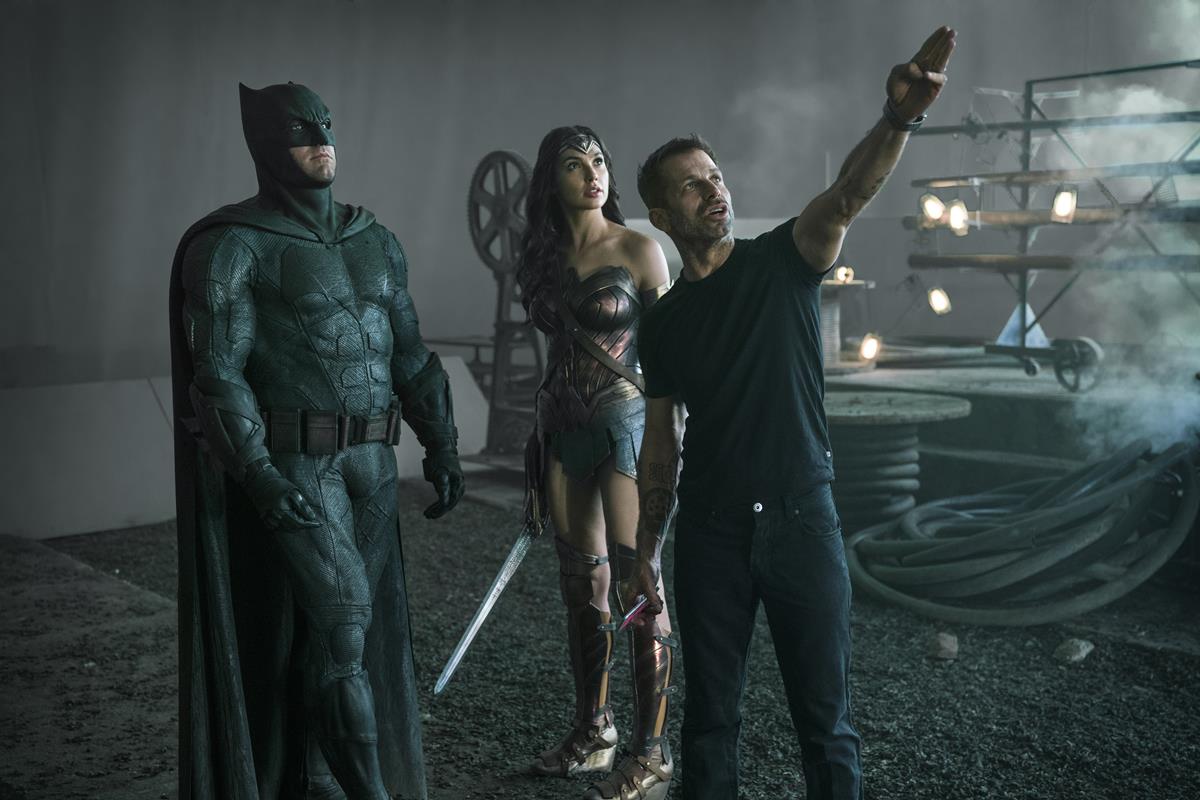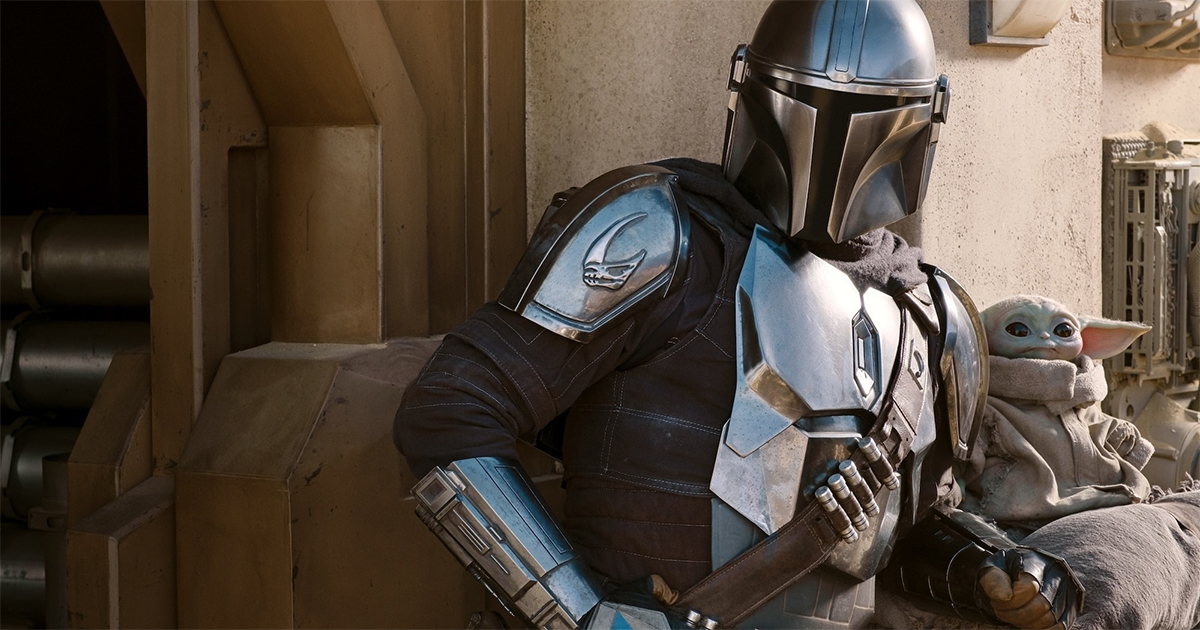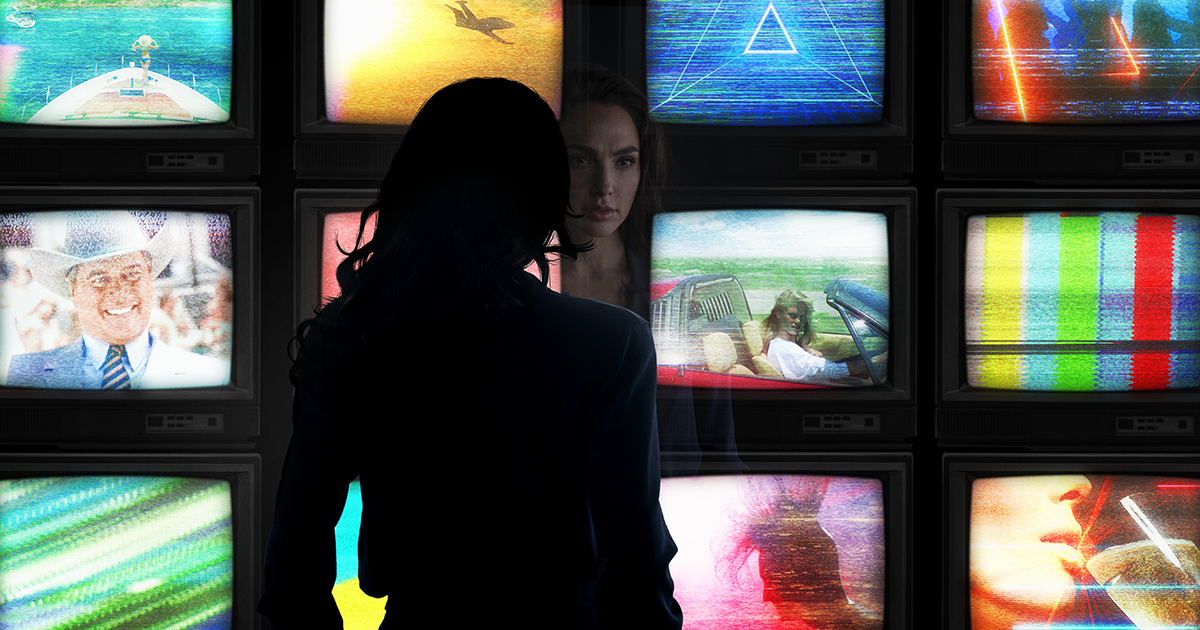Don’t Miss Our NAB Show Premiere Session, “A Cut Above: The Editors Behind Zack Snyder’s Justice League,” April 15 12:30 – 1:30 p.m.
Polarizing fans and critics alike from the moment it was announced, Zack Snyder’s Justice League premiered on HBO Max in a global day-and-date release on March 18 (with the exception of China, France and Japan, where release dates are still to be announced). The four-hour film event served as a warning shot to rival streaming companies that HBO Max and the DC Universe were not to be underestimated. Seven years in the making, The Snyder Cut, as it became widely known, was the result of a Hollywood studio tug-of-war that dates back to 2014. It was also a capitulation to online fans who had been loudly demanding the release of the director’s vision since the studio version, directed by Joss Whedon, flopped at the box office in 2017.
Anyone would be intrigued by the project’s looping, roller coaster-like backstory, which includes director changes, expensive re-shoots, disgruntled cast members, and even personal tragedy, but there was more: running just over four hours, The Snyder Cut was made in a nearly-square 1.33:1 aspect ratio.
“Having sat through this new Justice League in its 242-minute entirety, I can note that the two films represent utterly antithetical approaches to a project that might have benefited from a third, middle-ground option,” film critic Justin Chang wrote in his review for the Los Angeles Times:
“Forced to choose between the two, the Snyder cut is probably the one I respect more, which doesn’t mean it’s the one I prefer: The two-hour Justice League was, for all its baggage, a watchable exercise in damage control, with welcome moments of levity that cut through the murky torpor of Snyder’s storytelling. True, it butchered its convoluted mythology and left crucial material on the cutting-room floor — to which I can only say that by the end of the Snyder cut, I sort of wanted to kiss the cutting-room floor.”
READ MORE: Review: ‘Zack Snyder’s Justice League’ has arrived. The wait was long — and so is the movie (Los Angeles Times)

Julia Alexander, who has covered the saga of Justice League extensively for The Verge, noted in an interview with A Martinez for NPR’s Morning Edition that the difference between the two films is like night and day.
“From length time to the fact that Zack Snyder’s film clocks in at four hours and one minute to the fact that everything that Joss Whedon, who stepped in when Zack Snyder had to step back in 2017 after a personal tragedy — everything that he’s done is basically gone. The biggest change for fans everywhere is that it is a cohesive film that actually makes sense and is far more enjoyable,” she commented. “It is a fan’s cut. It is a bigger win for fans of DC Universe than, I think, anyone except maybe Zack Snyder.”
READ MORE: ‘Justice League’ Fans Finally Get Access To Zack Snyder Cut Of Film On HBO Max (NPR)
Broken into six chapters, Zack Snyder’s Justice League is billed as “an epic, unabridged, and wildly different cut,” boasting extended fight scenes, deeper dives into character history, new villains, and more. In the movie, Bruce Wayne (Ben Affleck) is determined to ensure Superman’s (Henry Cavill) ultimate sacrifice in Batman v Superman: Dawn of Justice (which Snyder directed, in 2016) was not in vain. He joins forces with Diana Prince (Gal Gadot) with plans to recruit a team of metahumans to protect the world from an approaching threat of catastrophic proportions. The full lineup of DC heroes includes Batman (Affleck), Wonder Woman (Gadot), Aquaman (Jason Momoa), Cyborg (Ray Fisher) and The Flash (Ezra Miller), who band together to save the planet from villains Steppenwolf, DeSaad and Darkseid.
Aside from length, the main difference between The Snyder Cut and the studio version is, well, just about everything, Jason Hellerman writes in No Film School. Whedon famously conducted extensive — and expensive — reshoots after he took over the project, and it is estimated that roughly 80 percent of the footage in Snyder’s Justice League is new, with most of the new footage appearing in the third act. Snyder’s version also includes a turn from The Joker (Jared Leto) and — signaling just how deeply we are in Snyder territory — Superman wears a black and silver suit instead of the red and blue suit used in Whedon’s version. “Almost nothing from the climax is the same. There’s no Russian family, Superman and Flash don’t run off to help people, and Darkseid actually shows up via Boom Tube and throws down,” Hellerman notes, adding:
“At the end of the day, this four-hour version provided much more context to the heroes, their journey, and the world. While I think the major flaw is the length, it is presented in chapter format, so there was ample time to pause, grab snacks, or go back for context.
“The visuals are stunning. While the IMAX format looked a little boxy on my TV, I got used to the aspect ratio and found it engrossing. The money spent on the budget definitely hit the screen. Characters feel fresher, designs are more thought out, and this feels like a complete vision.”
READ MORE: What Is ‘The Snyder Cut’ and How Is It Different from ‘Justice League’? (No Film School)

The first Justice League movie was released in 2017 with a 1.85:1 aspect ratio, which has been one of the most common US widescreen cinema standards since the 1950s, Matt Fowler notes in an article for IGN. “Releasing a 35mm film in this way means that the frames of the movie basically have to have their top and bottom cropped off,” he writes. “A big part of Snyder’s remaking/remodeling of Justice League involved restoring the original film squares that were composed in a 1.33:1 aspect ratio.
Fowler also mentions that the director’s love for the boxy 1.33:1 aspect ratio originated with the IMAX scenes shot for Batman v Superman: Dawn of Justice, which were rendered in full frame, in the 1.43:1 aspect ratio. Ever since then, Snyder had been enamored with the idea of using it for future projects. In an appearance at Justice Con in 2020, Snyder told the audience that he originally intended to shoot all of Justice League with the 1.33:1 aspect ratio in mind so the film could fill a giant 1.43:1 IMAX screen for the entire runtime, instead of just select action sequences:
“My intent was to have the movie, the entire film, play in a gigantic 1:43 aspect ratio on a giant IMAX screen. Superheroes tend to be, as figures, they tend to be less horizontal. Maybe Superman when he’s flying. But when he’s standing, he’s more of a vertical. Everything is composed and shot that way, and a lot of the restoration is sort of trying to put that back. Put these big squares back…. It’s a completely different aesthetic. It’s just got a different quality and one that is unusual. No one’s doing that.”
READ MORE: Why The Snyder Cut of Justice League Isn’t Widescreen (IGN)
When Whedon was hired to take over Justice League, Snyder famously walked off the set with his laptop containing the raw footage shot for the film. In an interview with Anthony Breznican for Vanity Fair, Snyder recounted that initially Warner Bros. just wanted to release the raw footage from his laptop, which was “a hard no,” he said, adding that he didn’t trust the studio’s motivations for releasing a raw cut:
“I go, ‘Here’s why. Three reasons: One, you get the internet off your back, which is probably your main reason for wanting to do this. Two, you get to feel vindicated for making things right, I guess, on some level. And then three, you get a shitty version of the movie that you can point at and go, ‘See? It’s not that good anyway. So maybe I was right.’ I was like, ‘No chance.’ I would rather just have the Snyder cut be a mythical unicorn for all time.”
Snyder estimated that the studio spent approximately $70 million to undo all of Whedon’s changes to his original vision for the film, but says that he didn’t receive a fee, which allowed him to retain creative control. “I’m not getting paid,” he said. “I didn’t want to be beholden to anyone, and it allowed me to keep my negotiating powers with these people pretty strong.”
READ MORE: Justice League: The Shocking, Exhilarating, Heartbreaking True Story of #TheSnyderCut (Vanity Fair)

Almost every movie Snyder has made has a director’s cut, he tells Dave Itzkoff in an interview for the New York Times. When he was finished with shooting Justice League, he asked editor Carlos Castillón to give him an early cut of the footage. “A bunch of my inner-circle buddies who worked on the movie always talked about, Oh, maybe we just drop a thumb drive somewhere and let a ‘fan’ find it,” he said to Itzkoff. “And I was like, that’s funny but I think it’s better if it just lives as this thing that no one will ever see. I’ve lost my appetite for the fight.”
Snyder’s original concept for the film’s runtime was that “the movie should be about 20 minutes longer each time,” he said:
“[Batman v Superman] should be 20 minutes longer than Man of Steel, and Justice League should be about 20 minutes longer than BvS. I thought the movie should be a little closer to three hours when I initially went into it. I know that it’s indulgent. The truth is there’s probably about 10 Snyder cuts — there’s a longer version than the four-hour version. There’s a three-hour version. A two-hour and 20. I think I showed the studio two hours and 40 minutes. And then I showed them subsequent cuts of two hours and 30 minutes, and two hours and 28 minutes, and two hours and 22 minutes.”
Itzkoff also asked Snyder how he ended up with enough material for a four-hour movie. “I do it on every movie,” the director said. “I tend to shoot a lot, but it’s really carefully done. It’s not like we’re just running a second camera. Everything is very methodically thought out. When I sit down to draw the movie, the movie is different than the movie the studio wants or that anybody knows about.”
READ MORE: Zack Snyder on ‘Justice League’ and His Rough and Tumble Ride (New York Times)

Film critics had a lot to say about the release of The Snyder cut, some of whom had looked on for years as an extremely active fan community savaged them online for deigning to review the studio cut released in 2017.
David Ehrlich, senior film critic at IndieWire, attempted to debunk the myth of The Snyder Cut imprisoned on the director’s personal laptop:
“The story of Snyder absconding from the project, with the assembly cut stored on his personal laptop, has been told many times over. Yet it’s still hard to say whether the Snyder Cut was always real, or if the worst people on Twitter simply pressured HBO Max into making it so. A $70 million spend was required to patch the footage into an unwieldy four-hour behemoth, and a recent interview confirmed that social media support was key to the success of Snyder’s pitch. After a short eternity of being neither real nor imagined, Schrödinger’s blockbuster is at long last available for the world to see in its glory.”
“In an ideal world, length, form, and distribution are all built to serve the story, but with streaming, they’re manipulated to serve the ravenous demand for content,” Ben Travers, IndieWire’s deputy editor of TV, complained:
“The Snyder Cut is just another example of a filmmaker given free rein, which is partly why we were cursed with a decade (or more) of “10-hour movies.” Streaming encourages “auteurs” to work without restrictions: Snyder has said he didn’t get many notes from HBO Max, and those that he did, he disregarded. But sometimes those notes are good — not from execs, necessarily, but from someone! Sometimes, you don’t need a slow-motion shot of Batman taking the stairs, or a full rendition of the Icelandic goodbye song for Aquaman. Sometimes you need help preserving the clearest version of your vision as you’re in the weeds, trying to get each detail just right.”

Chris O’Falt, deputy editor of crafts at IndieWire, grumbled that “it’s the franchise-as-auteur era, and serialization is king,” maintaining that he didn’t know if streaming had led to an era of “bloated movies hiding behind TV aesthetics” or if film directors “have just become glorified showrunners.”
In the end, O’Falt wrote, both Warner Bros. and DC “deserved the delirious Snyder Cut as much as the fans do, but for very different reasons,” adding, “I still found this serial requiem of a film to be silly in its seriousness, but also intoxicating in its indulgence and choreography. I started to realize that part of the reason Snyder’s movies always feel so choppy is because on set he’s apparently directing with the four-hour version in mind.”
Meanwhile, Kate Erbland, deputy editor of film at IndieWire, had a more generous take: “Watching Whedon’s two hours of candy-colored nonsense after sitting through Snyder’s four hours of murky drama was revelatory,” she wrote:
“Snyder’s cut may be way too long and far too generous with scenes and concepts that don’t engender such attention, but at least it’s coherent. I can’t imagine what it felt like for Snyder to see his vision — and, yes, let’s be honest here, even this vision is the product of decades of other creators’ work and a rigid overarching corporate scaffolding — reduced to an imitation that’s not just pale, but lacking in understanding the basic tenets of storytelling and character development. Snyder’s version of the DCEU might not be for me, but as one of those people Chris deemed a “creator-centric advocate,” I can’t help but be happy that Snyder managed to excise his film from Warner Bros. to make what he wanted. That’s what this should be all about.”
READ MORE: It Happened: What the Legacy of ‘Zack Snyder’s Justice League’ Means for the Future of Film (IndieWire)
The Snyder Cut is “a fascinating thing during a fascinating time and place,” Eric Francisco writes in Inverse. “All movies are subject to edits,” he notes:
“It’s what happens when capital-B billions are at stake with valuable IP like 80-year old comic book superheroes. But throughout the 21st century when superhero films have reigned supreme, there has never been an instance of the otherwise common practice of a ‘director’s cut’ release. Not from Marvel. Not from DC. Not in any universe. Not until Zack Snyder’s Justice League, streaming now on HBO Max.”
Francisco writes that The Snyder Cut would only be possible in the age of streaming. “It’s an impossibly gigantic yet personal movie that, with the luxury of at-home streaming, can be as weird and wild as Snyder wants it to be.”
READ MORE: The Snyder Cut Reveals A Surprising Way DC Can Actually Beat Marvel (Inverse)
Want more? Learn more about the history of The Snyder Cut in Los Angeles Times digital editor Tracy Brown‘s comprehensive timeline, which begins with the announcement of Snyder as the director of Justice League in April 2014 through the HBO Max release of Zack Snyder’s Justice League on March 18, 2021: Timeline: How ‘Zack Snyder’s Justice League’ happened (Los Angeles Times).















